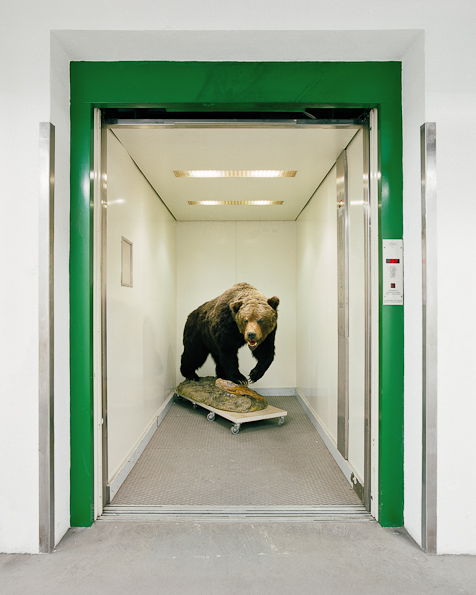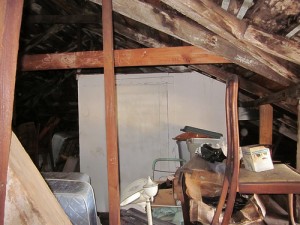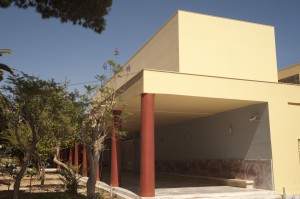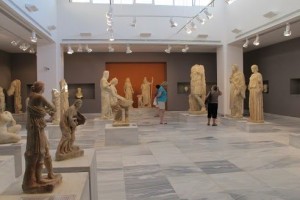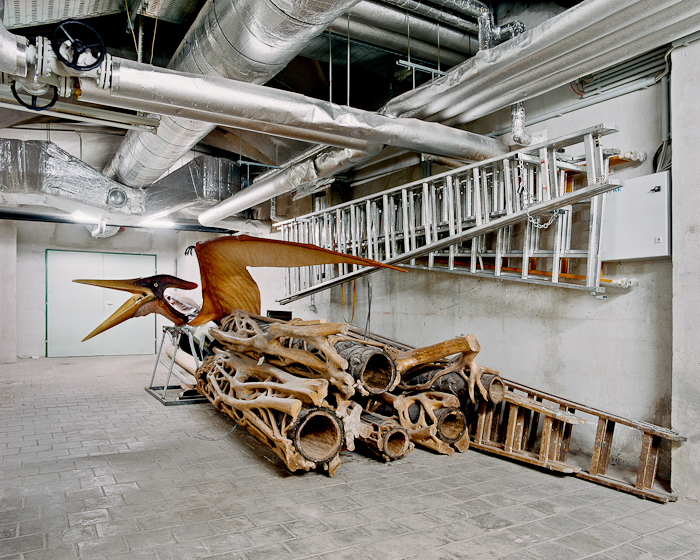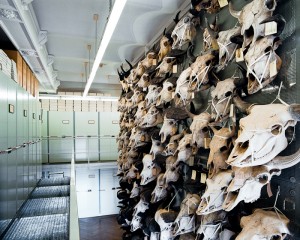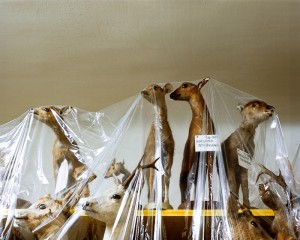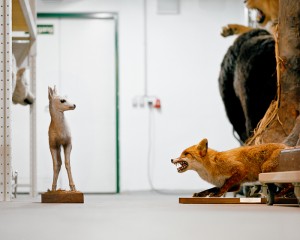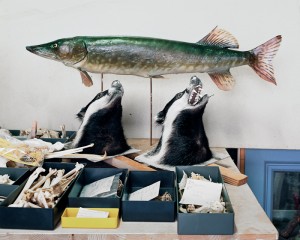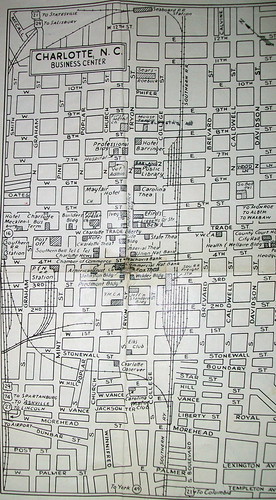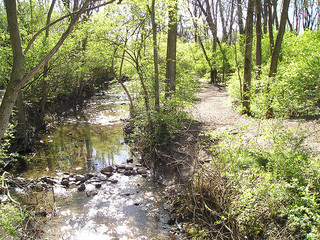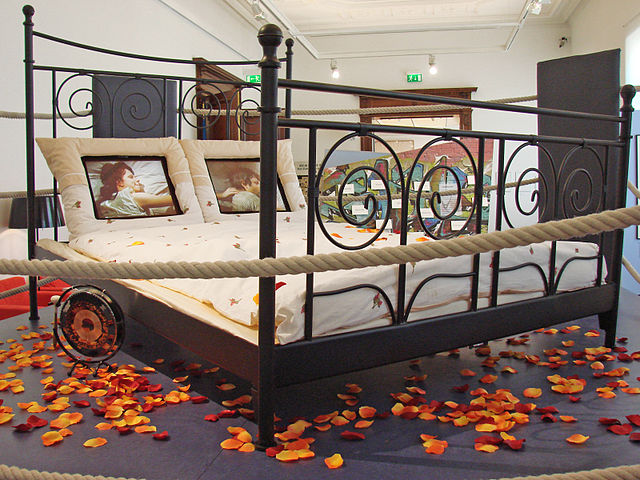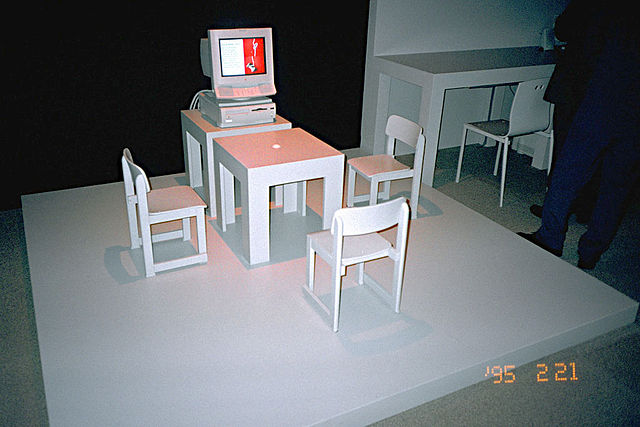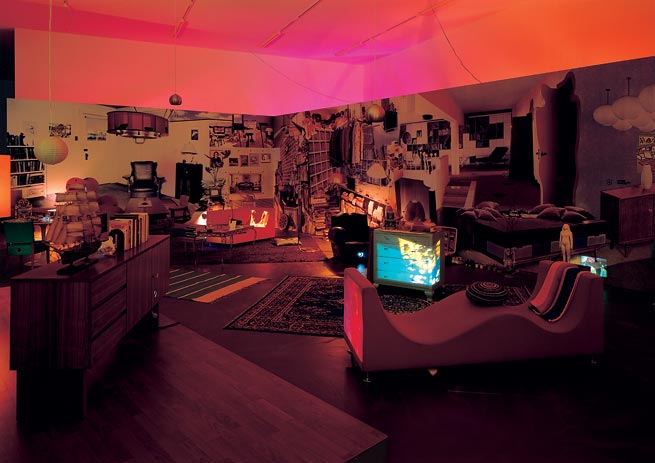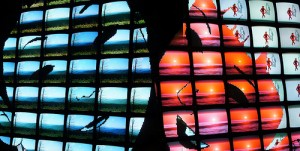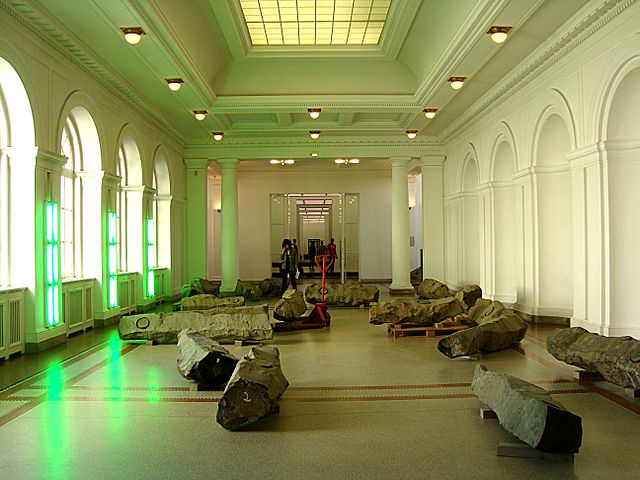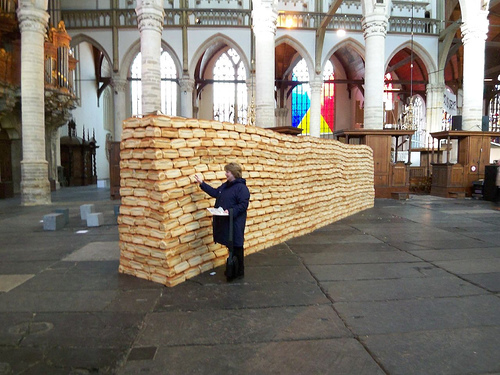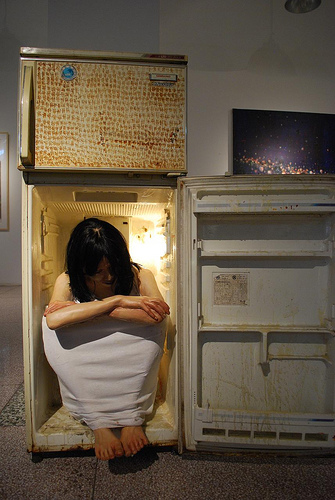The Registrars Committee of the American Alliance of Museums has a really outstanding listserv. A place to turn to when in need of advice, thoughts, ressources… and sometimes a good laugh. Recently someone started the thread “You might be a registrar if…” and well over fifty mails with sentences came in. These are too good to stay internally. Enjoy and feel free to add more in the comments!
You might be a registrar if…
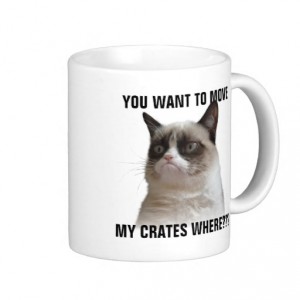
..your mother got this mug for you for your birthday…
[001] …you drive halfway home before realizing you’re still wearing nitrile gloves.
[002]…your car has been used to transport 19th century longrifles, a Civil War artillery sword, and crumbling pieces of a plank road.
[003]…your work clothes are always in danger of being ruined by soot -covered plows, loose nails, and oily machinery.
[004]…you’ve been cut by blue board, corrugated polypropylene, steel shelving, and T-squares.
[005]…you make sure you’re up to date on tetanus shots.
[006]…you’re stingy with your personal finances, but think nothing of spending $30 on a storage box for an artifact worth $5.
[007]…you have to force yourself to touch things in an antique store or junk shop.
[008]…seeing the destruction of Washington DC in the movie “Independence Day” your first thought is for the Smithsonian’s collections!
[009]…you think a $10 million insurance value is chump change.
[010]…you see a disaster movie and your first thought is: but that painting is owned by a different museum than the one shown… is it on loan?
[011]…you find yourself labeling the names and dates of your personal photographs just in case someone else finds them later.
[012]…you carefully order all your correspondence by date and store them away in the best temperature control part of your house.
[013]…you hesitate to handle your own jewelry without gloves.
[014]…you put Mylar circles under all your personal collections at home.
[015]…you totally do not understand how people can fail to recognize the absolute need for separate scissors for adhesive tape and non adhesive tape use (and there are separate paper cutters on the counter for sticky vs. non sticky).
[016]…you have two pairs of scissors, one labeled for cutting adhesive materials, one threatening death if so used.
[017]…you get over-excited looking at a tractor-trailer loading plan.
[018]…your favorite birthday gift (which you requested with the exact product number) is an archival metal-edge box with unbuffered tissue paper for your private collection.
[019]…you feel guilty about flying business class when you are accompanying an artwork in transit, but resentful when you must fly coach when you are not with the artwork.
[020]…you become delirious with joy if a conservator working on a piece of old furniture reports finding a few old threads of upholstery fabric clinging to an old nail.
[021]…you create an accession register to track all of your DVDs/Blu-Rays, a separate one for CD’s and yet another for books.
[022]…you track all outgoing and incoming loans of aforementioned goods (see [021]), using said register.
[023]…you scold your own mother when you walk in and find her using a regular bic pen on family photos instead of the nice pigma micron ones you bought her.
[024]…your children chastise other kids for touching objects in a museum.
[025]…you retrieve old family vacation slides from the trash bin where your mother has thrown them after scanning them.
[026]…you go to an exhibition in which you have no loans and the first thing you look for is a hygrothermograph in the gallery space.
[027]…your “random act of kindness” is rubbing down the edges of a label that is slightly curling, and hope if it happened in your galleries a fellow registrar would do the
same.
[028]…you can give a detailed description of how fabulous the mounts and/or installation techniques were, but can’t remember the art pieces you went there to see in the first place.
[029]…as a child you catalogued the contents of your dollhouse, and recorded how much each piece cost or if it was gift from a family member.
[030]…you cannot enjoy a special exhibition of paintings by your favorite artist because all you can see are condition problems that should be noted or brought to the attention of the resident registrar.
[031]…you make note of Climate controlled trucks / companys while on a road trip.
[032]…you find yourself labeling your kids’ artwork on paper carefully on the reverse on the lower right hand corner in #2 pencil.
[033]…you scream in horror, Don’t Touch!, at the little kids happily petting the raggedy old moose head at the local thrift shop because you are dead certain that thing has arsenic.
[034]…your friends and family no longer ask about your love life but instead open every conversation with: Sooo, what exhibit are you working on?
[035]…when personally moving, you label each box with a number, location, color coding system (with that color coded system extended into the rooms of your new living space), and alert symbols and/or stickers AND have a detailed spreadsheet to item level of what is in each box. It makes unpacking a breeze and you already have a box estimate established for when you move again (plus whatever percentage of increase during your residency at that dwelling)!
[036]…whenever you visit a new museum you beg their registrar for a tour of storage and get more excited about that than the exhibits.
[037]…you keep an extra pair of clean cotton gloves in your purse, just in case, and have actually been thankful when you’ve needed to use them.
[038]…you visit another museum and see only the storage space and loading docks and not the public spaces at all.
[039]…you have a pencil for the registrar’s use and only the registrar’s use. If someone else wants to borrow it you require a deposit and rental fee.
[040]…you use the tape measure next to the lipstick in your purse more often than the lipstick.
[041]…your son spots the accession number on an exhibited artifact and you explain it to him and the half dozen other people who noticed it.
[042]…when you go to an exhibit, you look closely at the plex vitrines to see if there are bubbles in the seams… and security screws on the lids!
[043]…you don’t notice the art so much because you are looking up a t the track lighting and wondering whether there are too many foot candles of light.
[044]…you get a little too close to the art to see if that inattentive guard on his cellphone will chastise you… and say something to him when he doesn’t! (Never let it be said registrars don’t defy authority when necessary!)
[045]…you are visiting an exhibition in a foreign city and begin to describe the methods of object display/housing to a family member and turn around to find 25 people trying to inconspicuously ‘listen in’. Then they realize you notice them and begin to ask questions about the object and museum practices. Soon – you have a larger group than the official tour guide and are chastised for taking away the focus from the ‘paid professionals’.
[046]…you have a separate stash of acid-free folders that you hide from other staff members so they are safe for your accession and loan files.
[047]…you go through your accession files and curse anyone who placed rusting paperclips, rubber bands, or other fasteners that are now causing problems.
[048]…you have been told by other staff members that couriering an artifact will be a really fun trip and you rolled your eyes at them.
[049]…you use Nomenclature terms (including the format with the comma) to describe items to others – whether they are museum objects or not.
[050]…after losing countless clearly labeled pairs of scissors, you begin hiding a pair in your filing cabinet. You only tell your intern and stress that guarding said scissors is one of their most important responsibilities.
[051]…you struggle to keep yourself from asking your server to pass along that the mechanically reproduced prints on the wall are in an acidic mat and will be fried in a few short years of direct sunlight. Of course you still mention this to everyone you are dining with.
[052]…you take great umbrage to being referred to as a “curator” and insist that your partner, family, and anyone within a five foot radius knows that you’re a registrar, and what, exactly, you do.
[053]…the security guards in galleries hover when you come in the gallery because you’re squatting and and walking back and forth to try to get a raking light so you can see any condition issues with a painting
[054]…you can pinpoint the location of one bone fragment from a multi-thousand collection to the shelf and box without consulting the database, but you can’t, for the life of you, find your keys, passport, or birth certificate at home.
[055]…you have the shortest job title in the whole institution, but you need the longest amount of time to explain what it means.
[056]…you refer to your child as 2012.1
[057]…you forget to bring your favorite cakes along when you go shopping, but are able to memorize the last 100 items accessioned in the right order with ease.
[058]…your boss calls you up to ask if we could use an XYZ and you reply: “we have one and it stands in A 17, third shelf, half right” without even checking the data base.
[059]…your community Reverend calls you to tell you that he loves that you volunteer for the “Bingo Wednesdays” at the retirement home, but could you please stop to shout out a list of artifacts after you shout “G 32”?
[060]…when you visit the homes of friends and family you automatically make sure any framed piece hanging on a wall is level! (And then mentally note any damage or condition issues.)
[061]…you are tempted to use cavity packing when sending Christmas gifts to out-of-town relatives.
[062]…you actually apply U/V film to your windows at home.
[063]…you are performing a full condition report on your personal stuff you are selling on eBay.
[064]…the security guard in every museum you visit has to tell you to step away from the vitrine, painting, object (when all you are really doing is trying to see how it was mounted)
[065]…you organize your summer trips on an excel spreadsheet cross referenced with 3 ring binder
[066]…you walk into a restaurant with animal heads on the walls and refuse a table under one because you KNOW there is arsenic in that mount (really has happened)
[067]…you get confused by lists that are ordered by some criteria other than accession (or loan or temporary) number.
[068]…you are writing a blog post/rant for artists who pack their own work for shipping.
[069]…you reconciling an FIC is the high point of your week/month/year.
[070]…you get a thrill out of a well-designed and constructed packing crate.
[071]…you catalog your collection of pencils on an excel spread sheet, and use them down to a tiny nub before “retiring” them (the equivalent of deaccessioning!)
[072]…you love the snarky Museum Director in the original Night at the Museum movie because he’s voicing what every museum professional is mumbling under their breath about visitors.
[073]…you offer to organize, catalog and scan hundreds of family photos and documents, then distribute them on flash drives to family members, and (of course) donate the originals to an archive.
[074]…you acquire a pH pen for testing your own personal collection of calligraphy & bookmaking papers.
[075]…you find yourself turning over the silver and china at a dinner party to check out the marks.
[076]…you shock your friends and especially your mother, when you compare the pros and cons of Peterbilt, Kenworth and Volvo cabs, mention reefers (that gets everyone excited!), or call out lengths or heights of trailers at a glance.
[077]…you shock your mother and impress your friends when you show them your certification to operate an order picker forklift.
[078]…while travelling on family vacation, random truck drivers wave and call you by name.
[079]…you use so much packing tape on each box during an impending home move that someone has to tell you to stop (repeatedly), b/c you’re using too much tape. Repeat a few dozen times and make several trips to buy more packing tape.
[080]…you label each box (during the same impending home move) with a letter and number on each side and corner that corresponds with a room in the house or a theme. You keep a corresponding log book with the box number and contents listed for easy identification.
[081]…you tell your home movers how to pick up, tie down, and stack furniture and boxes.
[082]…you alphabetize your dvd collection, have all of your books catalogued and organized by theme/topic, and have your vintage Star Wars collection catalogued and photographed. Ok, maybe that just makes me a nerd! : )
[083]…you have a color chart for all of your nail polish bottles. (My mom once told me that this was a little sick. I just think I’m extremely organized!)
[084]…you find yourself trying to use EMu shortcuts on Google and searches. I’m not even a registrar and I still find myself hitting CTRL-F after entering search terms instead of the ENTER that everything else uses 😛
[085]… your husband catches you mumbling SQL coding to yourself while you’re driving, because that is the best time to think through a problem with your report codes.
[086]…you are a “conduit of information.”
[087]…when you walk into a restaurant your husband says “uh oh” because some of the pictures on the wall are crooked and he knows you have to be seated in another area or you will whip out your (purse -sized) level.
[088]…you seem to find cotton or nitrile gloves in the pockets of every piece of clothing you own.
[089]…you make a game of hunting for visible accession numbers on objects in other museums’ exhibits
[090]…you find yourself looking at the font of other exhibit labels and wishing you knew where to find it (but you forgot to actually read the text!)
[091]…you go the courthouse for jury duty, and when going through the metal detector are asked to step aside due to a suspicious metal object in your purse…..that turns out to be a tape measure! (true story)
[092]…while driving down the road checking out the cabs on the tractor trailer and saying ” ooooh, that’s a really big cab-I bet they have a great sleeper in there!”
[093] …when traveling to accompany a work of art on loan, in “cargo class”, and you have to wait for 5 hours in dirty, hot customs warehouse, sitting next to the box, yawning and growling (as in cat mug photo), drinking a cup of some kind of brown liquid, which very slightly reminds you of coffee.
[094]…in your car you carry packing blankets, bubble pack, dartek and a measuring tape just in case. Yes, my husband thinks I am a little… well, intense.
[095]…you find bugs in the bug cabinets…
[096]…you can write a full sentence where the majority of the words are abbreviated.
You might be married to a registrar if…
[001]…you are horrified when the guys on Pawn Stars are handling an original Spiderman issue 1 in their bare hands.
You might teach registration if…
[001]…you carefully cut and paste all these great comments into one document and print them on acid-free paper to use on the first day of class as a supplement to What a Registrar Does all Day.
[002]……you notice your apprentice wrote “1936, estimate” in your data base and ask why he writes “estimate” behind such an exact date and he says:
“Well, this type was built 1936 but I haven’t had the possibility to check the serial number with the manufacturer, so, it’s only an estimate, right?”
And you nod, turn away, oppressing the urge to shout “That’s Mama’s boy!”
This post is also available in Italian, translated by Silvia Telmon






